A look back at the voices behind TEDx Colombo
It started off with a maximum of 100 people all clustered together to listen to one or two people come and talk about some ideas. These were ideas that at the time they thought were worth spreading. Fast forward almost 8 years and what began had such small beginnings now draws almost 2,000 people.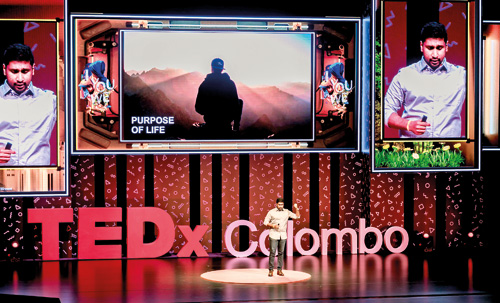
This was TEDxColombo 2018. This year, TEDxColombo 2018 was about “sparking an actionable understanding of identity and how it can be used as a tool for building empathy, trust, and solidarity within and across cultures.” While that may seem like a lot to take in, it basically came down to sparking an actionable conversation. The following is a look back at the lineup of speakers of TEDxColombo 2018.
Groupthink: Yay or Nay?
Kicking off TEDxColombo 2018 was Yudhanjaya Wijeratne, Big Data Researcher at LIRNEasi. Yudhanjaya spoke about some of the beliefs of those around him when he was young. To an extent, he thought they were right. But that all changed when he started a blog.
“I liked to write, so I kept on writing”. The community of bloggers was rather small, but diverse nonetheless. They had their own opinions and arguments. Out of the arguments, Yudhanjaya learned about conflicting information. His biases began to fall apart. He began to question things he knew, or at least thought he knew. As time went on, the bloggers developed their own groups and they drifted apart. He himself had his own little circle. Sadly, this division meant that one day all the people he learned from were gone.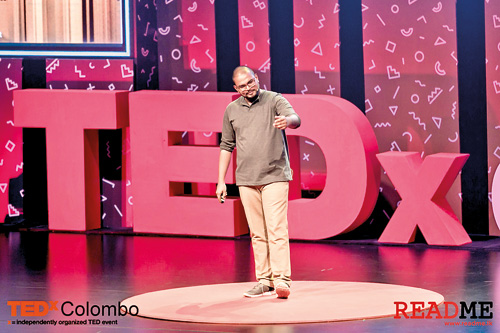
His point to all this? Well, people tend to look for other people who have things in similar to them. Looking at the call data of 10 million people, Yudhanjaya’s work showed that not only in Sri Lanka but those on a global level tended to associate with their own communities. This, in turn, leads to groupthink.
As the saying goes, “Birds of a feather, flock together”. But the danger here is that people tend to pick up beliefs. These beliefs can, in turn, be problematic. For example, what if a group of people believed that they were superior to others? Or that one particular subset of society shouldn’t exist and should be eliminated? A scary thought, isn’t it? Groupthink makes us censor ideas that we generate that go against our primary beliefs. So how do we solve this? Well, by associating people who are dissimilar to us.
Looking at the World through a different glass
Eduardo Pena was the last speaker on stage for TEDxColombo 2018. “When we are kids, we just care about the now. Not the future”. It’s simple and innocent. These are the words that Eduardo started off with, and we agree. When you are a child, you think only in a way a child would. But as you grow older, you tend to think differently.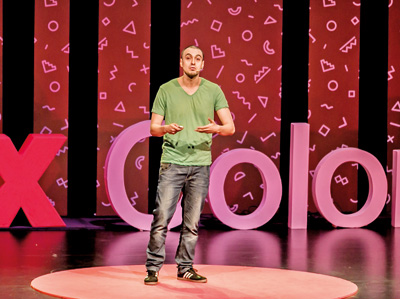
But Eduardo’s dream was to always keep that inner child with him. So, he began to draw. He took inspiration from elements such as people, places, and emotions and put that into an image. An image that he felt he related to. So, in essence, he would take something real, make it surreal and then give it to the people.
This always encouraged him to look at what’s around him in a different way. “Whatever I’m designing, I believe in them”. Eduardo went on to explain that it’s all about the frame of mind. It’s all about telling an entire story through one single image. He emphasized that all this is easier as a kid. You can create different characters, different worlds. All by just looking at things differently.
What is the purpose of our lives?
Quite a philosophical statement, isn’t it? Well, that’s what Ashan Perera was here to talk about. Ashan recounted how he set up a small playhouse in his backyard so that the poor children in his neighborhood could come and read and learn as they couldn’t go to school.
He grew up and went on to join a number of NGOs and other organizations with the hope of bridging the gap between facilitated communities and non-facilitated communities. Why? Because he identified the purpose of life as serving one another.
“It’s time to think beyond what we have been doing”, Ashan emphasized. Today we have enough human resources to address almost all pressing issues in society, both locally and internationally. A key factor that needs to be addressed is education. Education is fundamental in building capacity in people.
Education is all about knowledge, skills, and attitude. If you do not have a balance of these 3, you cannot properly utilize education. Through education, we can become more helpful as we know how to serve one another. If people were more helpful, we would be in a society that was more united than ever before.
Ashan then went on to speak about Human Rights. These, he said, should be a set of values and responsibilities, rather than using them when you have something to fight. Today’s society has changed. There’s no thick line between peacebuilders and what the average person does.
Everyone is a peacebuilder. Everyone can contribute. As Ashan says, if he can do it, so can we. We just have to bring that desire out of us and use that to make a change in our life or someone else’s life. It begins with you.
Can architecture build people’s lives?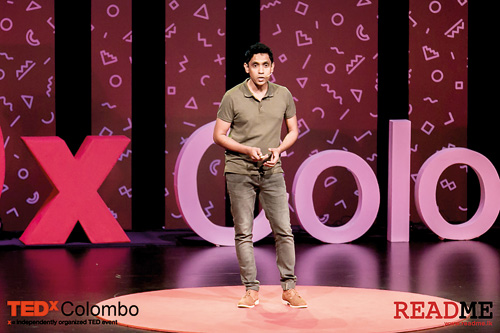
Another thought-provoking question. This was asked by Milinda Pathraja. “Sri Lanka for me is a place of extremes. There are lush forests, but on the other hand, there’s construction and commercialization as well”. Milinda went on to say that Sri Lanka boasts a history of architecture, but it also includes periods of war. The war is over, but the problems are not. We have urbanized vertical constructions which help people have a place to live. But at the same time, we also have informal settlements or illegal structures. We also have improperly trained workers, resulting in poorly constructed buildings. This not only poses a threat to the quality of the building but also to those living in and around the buildings. Milinda emphasized that there should be a technological framework for carrying out construction.
The framework should be able to adapt without affecting the performance of the building’s construction. In conclusion, Milinda explained that if architects are serious about building and rebuilding Sri Lanka, they will have to rethink the way they build.
Changing Our Views on Art
The second session for TEDxColombo was by a duo. Namely, Chinthaka Thenuwara & Poornima Jayasinghe – Co-Founders of Collective of Contemporary Artists (CoCA). The duo was up on stage to talk about how “one man’s trash is another man’s treasure”.
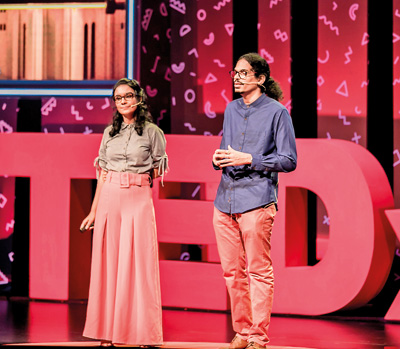
Pix courtesy Thisal Gunaratne
For them, Art is not a noun. It is a verb. Chinthaka explained how, suffering from Dyslexia, he would think through images. He learned about being an artist by being with people. He met another artist (Poornima) and began incorporating art into their daily lives. Chinthaka and Poornima set up a place to work on their art -CoCA Art. By making use of discarded or unused materials or objects, the duo set up space in such a way that the objects all had their own stories and people could add their own stories.
Chinthaka and Poornima have also used these materials to create living works of art. One example was with a bicycle. The bicycle was mounted onto a frame that was connected to a dynamo. The energy generated by peddling the bike would power the dynamo which was connected to a speaker.
The speaker would then play back sounds of nature etc. Another example of living art was a lineup of musical plants. Touching a leaf on a plant would generate a tone. This encouraged people to experiment with touching different leaves to generate tunes.
What influences people?
Kulani Abendroth-Dias was up next. She used an example of Johann, a German boy. Johann was a lover of animals and wouldn’t hurt anyone. Fast forward a few years, and Johann became a member of the Nazi Regime. So how did Johann go from someone so innocent to someone like that? Well, it’s all about the influence.
Kulani spoke on the various methods that people use to justify things the way they do through moral disengagement.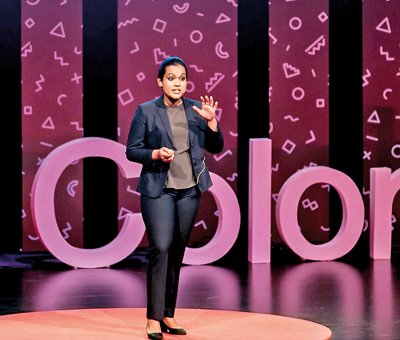
We do this to convince ourselves that there’s a reason for what we’re doing. Group behaviours affect people’s mindsets. Displacement of responsibility, the discrediting of evidence/denial, essentialist attribution, self-defence, these are all things that influence us. The key thing to understand is that we all do it. Humans have been justifying and disengaging for centuries. We are all a product of our group norms. But what if these norms could be influenced for good? Certain people have a better ability to influence others. Rather than lay down facts, if we could use verified facts and present them as a story, the impact would be greater. In conclusion, Kulani spoke perhaps the most important words that this country needs to hear.
“We are not born to hate. We learn to hate”. But in the same way, we can learn to accept human beings as they are. We can use social norms to accept and rebuild our country together. Oh, and Johann was Kulani’s grandfather- in law.
The author is senior tech writer for ReadMe a leading tech news provider.
For more information log onto readme.lk


